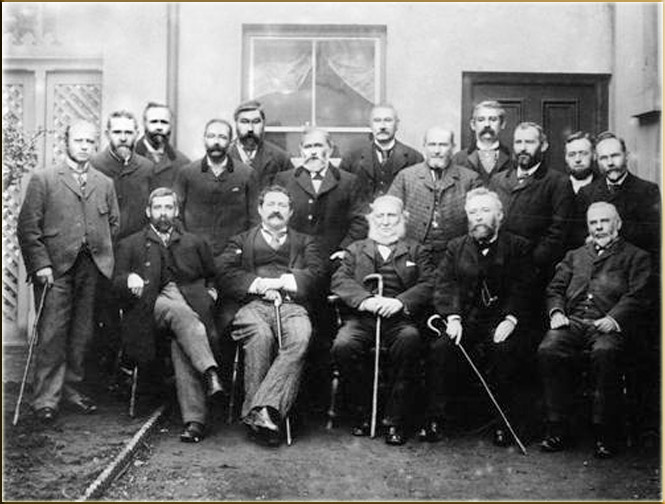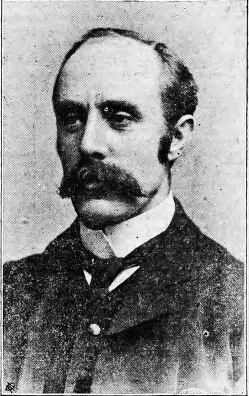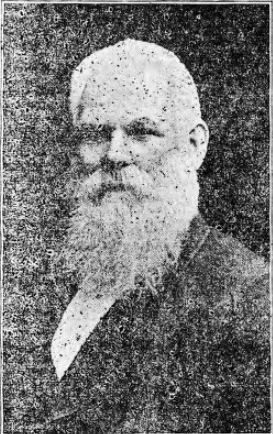|
Gadlys (electoral Ward)
Gadlys was, for much of the twentieth century, an electoral ward for the purposes of electing members to Glamorgan County Council and the Aberdare Urban District Council. Gadlys no longer forms an electoral ward and is part of Aberdare. Gadlys first became an electoral ward in the late nineteenth century with the formation of Glamorgan County Council. Gadlys was also one of the five electoral wards of the Aberdare Urban District Council from its formation in 1894. The other wards were Aberaman, Aberdare Town, Blaengwawr, and Llwydcoed. History Gadlys first became an electoral ward in the late nineteenth century with the formation of Glamorgan County Council. In 1889, James Lewis was elected as Independent member for Gadlys, defeating the nominee of the local Liberal Association. Lewis stood down in 1892 and was succeeded by David Morgan who was re-elected in 1895. Gadlys was also an electoral ward of the Aberdare Urban District Council Aberdare Urban District Council was a l ... [...More Info...] [...Related Items...] OR: [Wikipedia] [Google] [Baidu] |
Ward (politics)
A ward is a local authority area, typically used for electoral purposes. In some countries, wards are usually named after neighbourhoods, thoroughfares, parishes, landmarks, geographical features and in some cases historical figures connected to the area (e.g. William Morris Ward in the London Borough of Waltham Forest, England). It is common in the United States for wards to simply be numbered. Origins The word “ward”, for an electoral subdivision, appears to have originated in the Wards of the City of London, where gatherings for each ward known as “wardmotes” have taken place since the 12th century. The word was much later applied to divisions of other cities and towns in England and Wales and Ireland. In parts of northern England, a ''ward'' was an administrative subdivision of a county, very similar to a hundred in other parts of England. Present day In Australia, Canada, New Zealand, Sri Lanka, South Africa, the United Kingdom, and the United States, wards are an ... [...More Info...] [...Related Items...] OR: [Wikipedia] [Google] [Baidu] |
Glamorgan County Council, 1889-1974
Glamorgan County Council was established in 1889 together with the administrative county of Glamorganshire under the Local Government Act 1888. The first elections to the council were held in January 1889. The council was abolished under the Local Government Act 1972 on 1 April 1974. It was replaced by Mid Glamorgan County Council, South Glamorgan County Council and West Glamorgan County Council. The first Council, 1889-92 There were sixty-eight members elected to the new county council in 1889. Prior to 1889 local government had been carried out by unelected magistrates, often wealthy industrialists and landowners. The first intake of Glamorgan County Council reflected this. Eight members declaring themselves as 'colliery proprietors' (and 15 others being chairmen, directors or prominent colliery shareholders). Owner of Cyfarthfa Ironworks, William T. Crawshay, was elected in the Cyfarthfa ward and four tinplate manufacturers were elected. Sir Hussey Vivian (shortly to become Lor ... [...More Info...] [...Related Items...] OR: [Wikipedia] [Google] [Baidu] |
Aberdare Urban District Council
Aberdare Urban District Council was a local authority in Aberdare, Wales. History It was created in 1894 as a result of the 1894 Local Government of England and Wales Act and the 1894 Aberdare Urban District Council election saw the election of the first members of the authority. The Council existed until 1973 and replaced the Aberdare Local Board of Health which had functioned since the 1840s. Its boundaries were identical to those of the original parish of Aberdare. Initially, the Council had fifteen members but this was increased to twenty in 1906, as a result of the increase in population. There were five wards, namely Aberaman (also known as No. 5 Ward), Blaengwawr (also known as No. 4 Ward), Gadlys (also known as No. 2 Ward), Llwydcoed (also known as No. 1 Ward), and the Town Ward (also known as No. 3 Ward). The first councillors were elected at the 1894 elections. Most of the first members of the authority had served on the Local Board, including the first chairman ... [...More Info...] [...Related Items...] OR: [Wikipedia] [Google] [Baidu] |
Glamorgan County Council
Glamorgan County Council was established in 1889 together with the administrative county of Glamorganshire under the Local Government Act 1888. The first elections to the council were held in January 1889. The council was abolished under the Local Government Act 1972 on 1 April 1974. It was replaced by Mid Glamorgan County Council, South Glamorgan County Council and West Glamorgan County Council. The first Council, 1889-92 There were sixty-eight members elected to the new county council in 1889. Prior to 1889 local government had been carried out by unelected magistrates, often wealthy industrialists and landowners. The first intake of Glamorgan County Council reflected this. Eight members declaring themselves as 'colliery proprietors' (and 15 others being chairmen, directors or prominent colliery shareholders). Owner of Cyfarthfa Ironworks, William T. Crawshay, was elected in the Cyfarthfa ward and four tinplate manufacturers were elected. Sir Hussey Vivian (shortly to become Lord ... [...More Info...] [...Related Items...] OR: [Wikipedia] [Google] [Baidu] |
Aberaman (electoral Ward)
Aberaman is an electoral ward in Rhondda Cynon Taf, Wales. It was an electoral ward for much of the twentieth century, for the purposes of electing members to Glamorgan County Council and the Aberdare Urban District Council. The village of Aberaman was subsequently covered by two electoral wards, Aberaman North and Aberaman South, for the purposes of electing members to the Rhondda Cynon Taf County Borough Council. Aberaman North was composed mainly of Aberaman itself while Aberaman South included Abercwmboi, Cwmaman, Godreaman and Glynhafod. Aberaman first became an electoral ward in the late nineteenth century with the formation of Glamorgan County Council. Aberaman was also one of the five electoral wards of the Aberdare Urban District Council from its formation in 1894. The other wards were Aberdare Town, Blaengwawr, Gadlys and Llwydcoed. History 1889-1914 Representation of the ward in the 1890s was dominated by supporters of the Liberal Party although elections were ofte ... [...More Info...] [...Related Items...] OR: [Wikipedia] [Google] [Baidu] |
Aberdare Town (electoral Ward)
Aberdare Town was, for much of the twentieth century, an electoral ward for the purposes of electing members to Glamorgan County Council and the Aberdare Urban District Council. It currently comprises two electoral wards, Aberdare East and Aberdare West/Llwydcoed, for the purposes of electing members to the Rhondda Cynon Taf County Borough Council. Aberdare East is composed mainly of a part of Aberdare itself while Aberdare West includes the community of Llwydcoed which, for many years was itself as electoral ward. Aberdare Town first became an electoral ward in the late nineteenth century with the formation of Glamorgan County Council. Aberdare Town was also one of the five electoral wards of the Aberdare Urban District Council from its formation in 1894. The other wards were Aberaman, Blaengwawr, Gadlys and Llwydcoed. History 1889-1914 Glamorgan County Council 1889-1914 In 1889, David Price Davies became the first Liberal member for Aberdare Town. Davies was returned ... [...More Info...] [...Related Items...] OR: [Wikipedia] [Google] [Baidu] |
Llwydcoed (electoral Ward)
The community of Llwydcoed, Rhondda Cynon Taf was, for much of the twentieth century, and electoral ward for the purposes of electing members to Glamorgan County Council and the Aberdare Urban District Council. Llwydcoed is no longer an electoral ward but forms part of Aberdare West/Llwydcoed electoral ward for the purposes of Rhondda Cynon Taf unitary authority elections Llwydcoed first became an electoral ward in the late nineteenth century with the formation of Glamorgan County Council. Llwydcoed was also an electoral ward of the Aberdare Urban District Council from its formation in 1894. History 1889–1914 The first representative was the venerable Rees Hopkin Rhys who was succeeded by the Liberal industrialist Rees Llewellyn Glamorgan County Council In 1889, Rees Hopkin Rhys was elected as member for Llwydcoed, defeating Griffith George. Rhys was re-elected unopposed in 1892 and although described as a Liberal this was unlikely. Boundary changes in 1895 saw ... [...More Info...] [...Related Items...] OR: [Wikipedia] [Google] [Baidu] |
1889 Glamorgan County Council Election
The first election to the Glamorgan County Council was held on 17 January 1889. Results were announced over several days. They were followed by the 1892 election. The authority, by far the largest county in Wales in terms of population, was established by the 1888 Local Government Act. The county of Glamorgan was at this time becoming heavily industrialised although some areas such as the Vale of Glamorgan remained essentially rural. Overview of the Result The rise of nonconformist liberalism, especially since the 1860s, throughout Wales, had challenged the prevailing influence of the landed gentry. However, even in 1889, the traditional forces remained influential and no working men were elected to the Council. For many weeks prior to the election there was lively campaigning in most wards and on election day, 'there was great interest manifested in the proceedings, and at most of the polling places a great many votes were recorded.' The results are incomplete. As in most p ... [...More Info...] [...Related Items...] OR: [Wikipedia] [Google] [Baidu] |
Independent (politician)
An independent or non-partisan politician is a politician not affiliated with any political party or bureaucratic association. There are numerous reasons why someone may stand for office as an independent. Some politicians have political views that do not align with the platforms of any political party, and therefore choose not to affiliate with them. Some independent politicians may be associated with a party, perhaps as former members of it, or else have views that align with it, but choose not to stand in its name, or are unable to do so because the party in question has selected another candidate. Others may belong to or support a political party at the national level but believe they should not formally represent it (and thus be subject to its policies) at another level. In running for public office, independents sometimes choose to form a party or alliance with other independents, and may formally register their party or alliance. Even where the word "independent" is used, s ... [...More Info...] [...Related Items...] OR: [Wikipedia] [Google] [Baidu] |
1892 Glamorgan County Council Election
The second election to the Glamorgan County Council was held on 8 March 1892. The 1889 election was the first contest and the next was the 1895 election. Glamorgan County Council had been established by the 1888 Local Government Act, and the first election held in January 1889. Glamorgan was by far the largest county in Wales in terms of population. The county of Glamorgan was at this time becoming heavily industrialised, although some areas such as the Vale of Glamorgan remained essentially rural. The rise of nonconformist liberalism, especially since the 1860s, throughout Wales, had challenged the prevailing influence of the landed gentry. However, even in 1889, the traditional forces remained influential and no working men were elected to the Council. This changed in 1892 with the unopposed return of David Morgan in Aberdare and the success of Isaac Evans in Resolven. Results are mainly drawn from the '' South Wales Star''. (Detail of the electorate in the contested seats is ... [...More Info...] [...Related Items...] OR: [Wikipedia] [Google] [Baidu] |
David Morgan (trade Unionist)
David Morgan (''Dai o'r Nant''; 14 February 1840 – 5 July 1900) was a Welsh miners' agent and trade unionist who played a prominent role in the history of industrial relations in the South Wales Coalfield from the 1870s until his death in 1900. Early life Morgan was born at Nantygwenith, Merthyr Tydfil, the third son of William Morgan. His parents kept a public house known as the Full Moon at Nantygwenith, and this accounts for the pseudonym ''Dai o'r Nant''. His father was a local musician of some note and there is evidence that his son inherited some of his talents. In the late 1850s the family moved to Mountain Ash where Morgan found work at the Deep Navigation Colliery. Industrial disputes of the 1870s It is not certain when David Morgan first emerged as a trade union activist but David Pretty suggests that he addressed a meeting at the celebrated 'rocking stone' on Pontypridd Common in 1868. There is firm evidence that he actively participated in a mass meeting of miner ... [...More Info...] [...Related Items...] OR: [Wikipedia] [Google] [Baidu] |
1895 Glamorgan County Council Election
The third election to Glamorgan County Council was held on 4 March 1895. It was preceded by the 1892 election and followed by the 1898 election. Glamorgan County Council had been established by the 1888 Local Government Act, and the first elections held in early 1889. The county of Glamorgan was at this time becoming heavily industrialised, although some areas such as the Vale of Glamorgan remained essentially rural. The rise of nonconformist liberalism, especially since the 1860s, throughout Wales, had challenged the prevailing influence of the landed gentry. However, even in 1889, the traditional forces remained influential and no working men were elected to the Council. This changed in 1892 with the unopposed return of David Morgan in Aberdare and the success of Isaac Evans in Resolven. Overview of the Result As in most parts of Wales, the Liberal Party was once again triumphant and won a majority of the seats. In 1895 there were more unopposed results than in previous ele ... [...More Info...] [...Related Items...] OR: [Wikipedia] [Google] [Baidu] |




